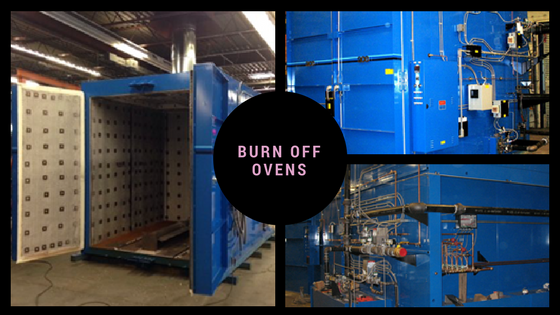Burn-off ovens are used for cleaning various industrial components such as station transformers, hangers, car skids, breaker plates, water pumps, etc. These ovens heat hydrocarbon or organic materials present in the components, and decompose them in the absence of oxygen. Water vapor and carbon dioxide are the byproducts released during the process. Many times, water suppression systems are used to control the intensity of oxygen within the oven. Thus, it is very important to understand the thermal capabilities of a burn-off oven before purchasing them. Now, the next question is how to determine the thermal capabilities? Read this post to get the answer.
Guidelines for Determining the Burn-Off Ovens on Basis of Thermal Capabilities
In order to shortlist the right burn-off oven, you need to consider the various thermal characteristics such as heat response time, maximum heat transfer rate, and life expectancy of the oven. Mentioned below are critical guidelines, which will help you make the right selection.
Decide the thermal design: Among several heater designs available in the market, convection process heaters are said to be application and process specific. Typically, a convection process heater includes a top-down and straight convection heater. Straight convection heater features a burner box with an outlet port. Inefficient thermal design properties can lead to poor heat distribution, and failure of the burner box. Also, most of the convection heating ovens have a time lag, which results in heat loss to outside insulated walls. Hence, it is critical to ensure an efficient thermal design to obtain maximum productivity.
Determine the application temperature & environment: While selecting the materials for the heater construction, ensure that they can withstand temperature extremes, and harsh environments. The heating efficiency of the oven is affected by the presence of moisture, humidity, and external agents. In order to reduce the heat sinking effect, various physical features of the heater must be taken into consideration. These physical features include tips on the mounting capability of the heater, determining the heat zones, and maximum area covered by the heater.
Construction of convention heated ovens: During the combustion, heat is produced by the reaction of air and fuel. During this process, partial heat loss happens. The escaped heat reaches the combustion chamber or the heating enclosure. Hence, construction of the heated oven is very important to avoid unnecessary heat loss or uneven heat distribution.
The above-mentioned design considerations will help you in selecting the right industrial burn-off oven. Are you are searching for the right burn-off oven for your industrial application? You must visit an industry expert like Armature Coil. The company is one of the reputed suppliers and manufacturers of industrial burn-off ovens in diverse thermal specifications.

